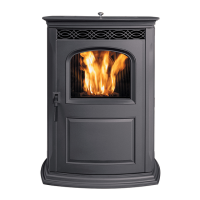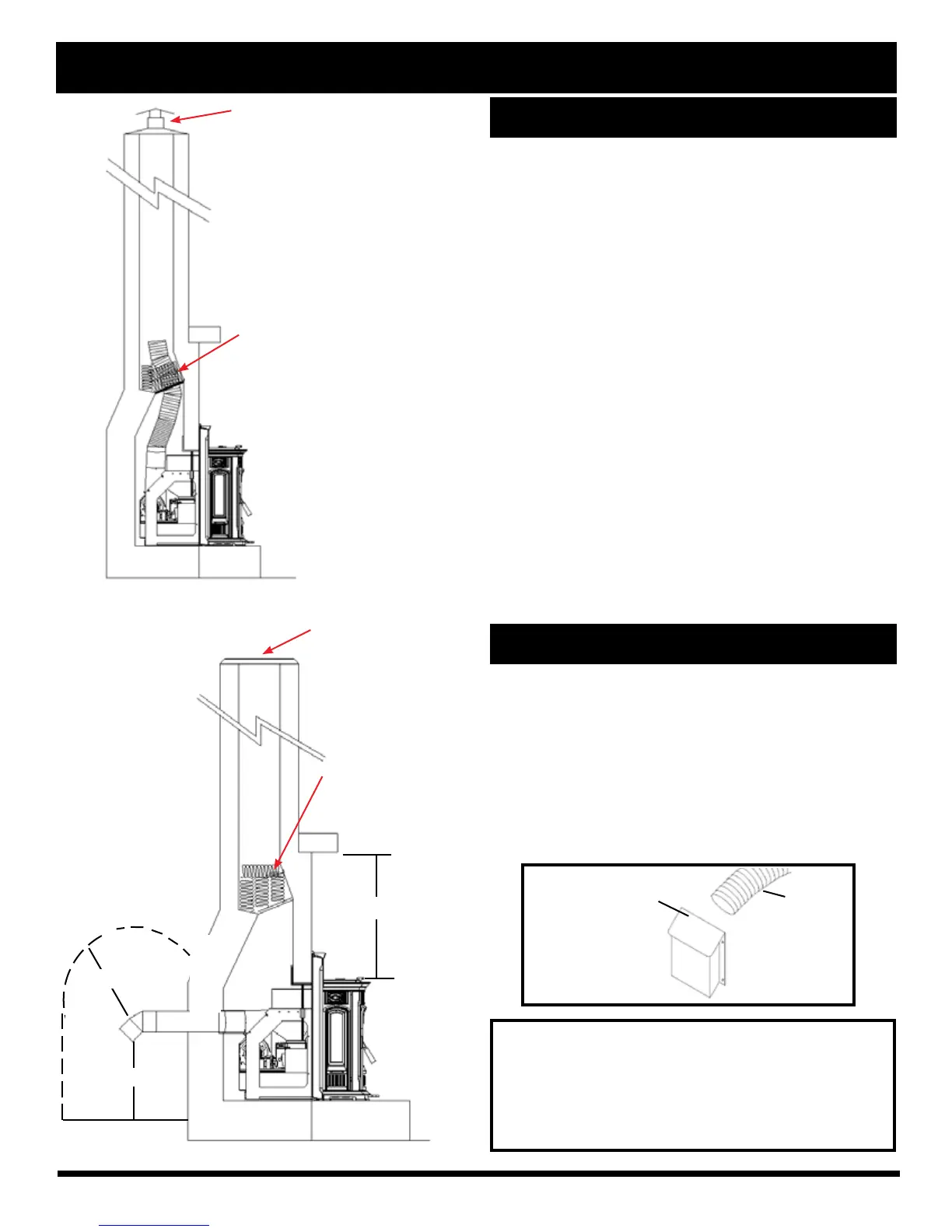3-90-00674R20_08/12
This method provides excellent venting for normal
operation. This method also provides natural draft in
the event of a power failure. If the chimney condition
is questionable you may want to install a liner as in
method #2.
This is the minimum allowed vent pipe using 4"
stainless steel ex pipe.
The vent pipe must extend past the damper sealing
area by at least 12 inches.
The insulation material must not be allowed to
expand to the point that it covers the end of the ex pipe.
The chimney should be capped with any style cap that
will not allow rain or snow to enter.
In some places in the US and Canada, it is required
that the vent pipe extend all the way to the top of the
chimney. Check your local codes.
Fig.51
This method provides excellent venting for normal
operation and in a replace with inadequate ue space,
or a height of over 30 feet. A 3" or 4" PL vent pipe should
be used with the needed swivel ue stub.
The ue stub insulation wrap must still be used
with this method. See page 14, Fig. 27 & 29. With a
100% outside air kit the outside air can be installed in
the same manner as the ue pipe.
The chimney top must be capped
to prevent rain and/or snow from
entering the chimney.
Stainless Steel
Outside Air Inlet
Cover
part# 1-10-09542
3" Flex
pipe
12" minimum
Fig.52
18" min.
36"
Chimney top
The damper area must be
sealed with a steel plate and it
is recommended that Kaowool,
Mineral wool or an equivalent
non combustible insulation is
used on top of the plate to reduce
the possibility of condensation.
Insulation alone should not be used
to seal the damper opening.
Fiberglass
insulation packed
above the damper
opening and
sealed plate. (Not
a Harman product.)

